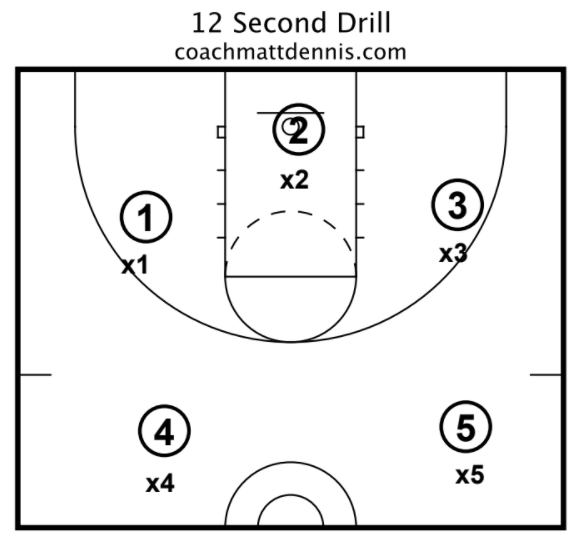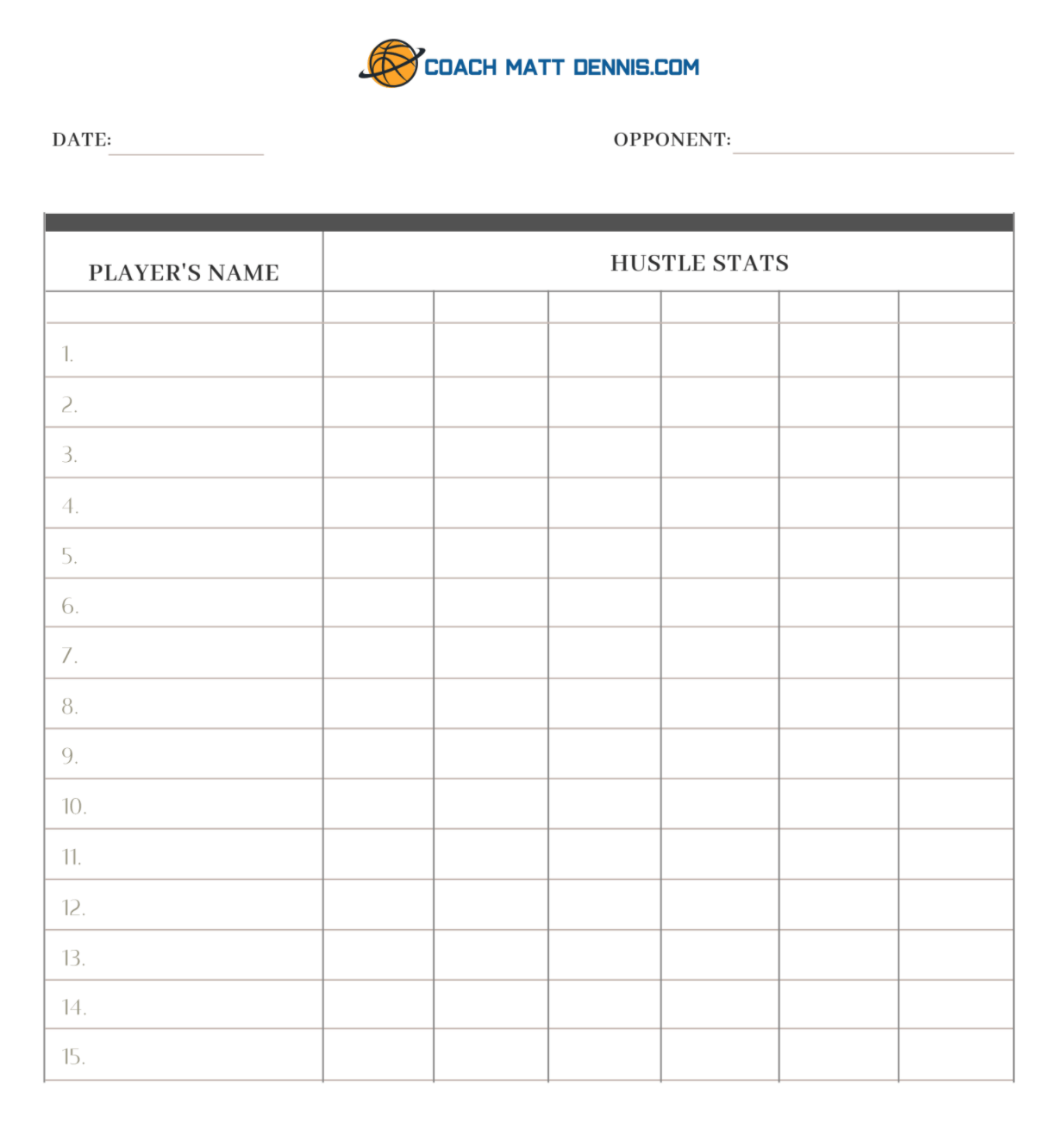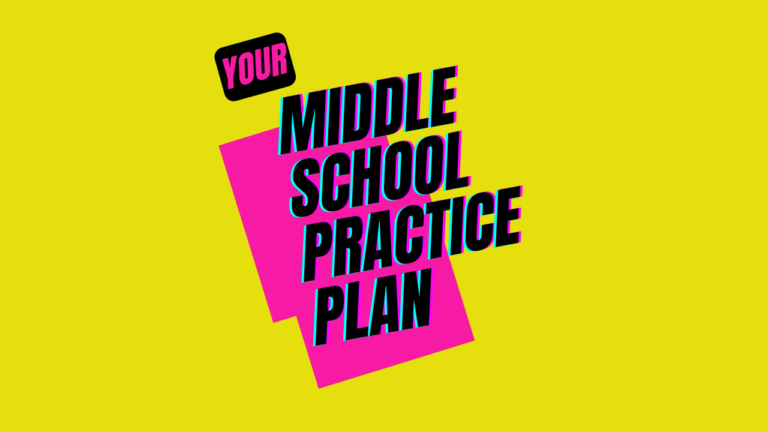A Basketball Coach’s Hustle Playbook
As coaches, we are always looking for ways to get our teams to the next level. This may be winning a big game or inching ours team closer to a specific goal. No matter what the next level is for your team there is one thing that is needed – hustle.
Hustle can be measured differently by coaches but the process is the same. Players have to be committed and willing to do a little bit more than they are used to doing and more than their opponent will do. This may mean sprinting to win a 50/50 ball, diving on the floor to save a possession, chasing down a long rebound, or sprinting to get a back tip in a press. These are only a few of the many hustle plays that players could make.
The question for coaches is, how do we get our players to do this? I hope to help you answer this question as we look at a Basketball Coaches Hustle Playbook.
1. Don’t Allow Players To Settle
While some players naturally play harder than others you don’t want to allow any player to settle. If a player is a 3 out of 10 on the hustle scale you want them to get to a 6. If another players is already a 6 out of 10 on the hustle scale you don’t stop coaching them to hustle, you push them to get to an 8, 9, or even 10.
2. Start The Hustle Conversation
Start by asking your players what hustle looks like to them. If your players don’t have a good reference place to start from it’s going to be hard to push them to a new level. Questions you could ask are…
- What does a a hustle play look like to you?
- How do you know if your teammate is hustling?
- Who is a player you think of when you hear the word hustle? Why did you think of them?
Now that you have the players responses are they in line with what you were thinking? If they aren’t you need to paint a picture of what hustle looks like and how it pertains to your system.
- We press and back-tips show how bad we want to get after our opponents, how much we want to hustle.
- Offensive rebounding is a must win battle for the team. Pursuing long rebounds and sacrificing yourself to beat out the opponent shows great hustle.
- 50/50 balls have to go our way. If we win the 50/50 battles we will come out on top.
As you can tell, I am firm believer in communicating with players off the court and then bringing what you’ve talked about onto the court. I know some coaches will pass over the communication piece I’ve just laid out. I just can’t bring myself to skip this step though. My teams have performed well over the years and I believe its because we are on the same page. When players know what you expect they will rise to the occasion in my opinion. For this reason, I always start with communication and then transition to on the court practice.
3. Building Hustle Into Your Practice
The time to get players to hustle in games starts in practice and not in a speech during timeouts or at halftime. Teams who hustle do so because they have been taught to hustle in practice. Here are three coaching strategies for you to use…
- Create drills with no out-of-bounds so hustlers have a natural reward.
- Stop practice to reward great hustle plays.
- Show great hustle plays from games in film sessions.
4. Two Hustle Drills For Practice
Having drills that are designed for hustle can be a great way to teach your players how to hustle. It also creates a camaraderie amongst players when they hustle in practice and games. When a player knows that a hustle play is important to the team they will be more likely to lay it all on the line.
Two Great Practice Drills
Drill #1

Directions:
(This drill simulates the amount of time an offensive player has before a five second call is made while also handling pressure.)
– Put players in groups of 2 with one ball.
– One player is the offensive player and one player is the defensive player.
– Off. and Def. players should be positioned an arms length away from each other. (Groups should be spread out away from each other.)
– When the coach blows the whistle, players need to pivot and protect the ball for 4 seconds.
– A second whistle is blown, players can use the dribble to create separation from the defense for another 4 seconds.
– A third whistle is blown and the offensive player must pick up the dribble and protect the ball from the defense for the final 4 seconds.
– On the fourth whistle the dribble rolls the ball away into the open court. The defensive player needs to dive for the loose ball.
Variation: Using the game clock in the gym is a great way to lower the number of whistles a player needs to listen for. The buzzer that goes off after 12 seconds would be used in place of the fourth whistle.
Drill #2

Directions:
– Put players in groups of three with one ball.
– Players 1-4 on the baseline slowly roll the ball out.
– The players lined up near the top of the key are competing against each other to get the loose ball.
– Once the ball is rolled out, players compete to beat each other to the ball by diving, bumping each other, and being quicker than their opponent.
– The player who rolled the ball needs to call out the name of the person who eventually gets possession of the ball (this teaches players to not just watch the play).
– You can do this rolling the ball out of bounds and having players save the ball before it hits the sideline as well.
A quick story… One year, while coaching at Kalamazoo Valley C.C., I did a drill where each player had to dive for the ball and save it before the ball went out of bounds. If the player saved the ball the team was to go crazy and cheer. A couple of days later, we were playing Jackson C.C. and it was a close game. During the second half of a close game there was a loose ball that was headed out of bounds in the back court. One of my player dove to save the ball as the opposing teams player stopped short of diving and was caught watching. Our bench went nuts. The energy level of every player on our team skyrocketed. Unfortunately, we didn’t gain possession of the ball as the player was called out of bounds before saving the ball. Something better happened though, my team got FIRED UP, the energy level was twice, maybe three times what it was prior to the player diving. We went on to take a lead and win the game. I truly believe the drill we did in practice led to the dive in the game, which led to a pumped up team and ultimately a win.
5. Hustle Play Categories
The two drills above are great for teaching hustle in a general sense. There may be more specific types of hustle that fits your programs style of play though.
Here are a few ideas…
OFEENSE
- 2nd chance points
- Offensive rebounds
- Great screens
DEFENSE
- Taking a charge
- Back tips
- Great traps
EFFORT
- Diving on loose balls
- Key stops in a game
- Winning 50/50 balls
BENCH
- Loud & Energetic
- High fives & fist bumps
- Bench Warnings
The list in each category isn’t exhaustive because I don’t know what important to you and your program. If you like getting post touches on offense you may add it to the list or maybe the number of turnovers you create when you use a full court press. The big thing is to find the hustle plays that fit your style of play and are important to you and then develop a way to incorporate those areas into your practices.
6. Hustle Stats
The only way to know with certainty if what you’ve communicated and practiced is translating into games is to track your hustle play through stats.
As coaches, we know our players are more likely to things we emphasize and not just what we say. This is why communicating what hustle looks like and then practicing it are extremely important. To get the absolute most out of our teams hustle is to track hustle plays.
Let’s take back-tips for example. If you use a full-court press and know that 50% of back-tips end up in a steal you have a goal of twelve back-tips per game. This would give your team an additional six possessions where your opponent didn’t even get a chance to score in the half-court. By tracking this hustle stat you can let your team know exactly how their hustle pays off in a game.

In closing, it doesn’t matter how skilled or athletic your players are for them to hustle. Any player on any team can provide hustle plays that will make your team harder to play against. So pick your hustle stat, start emphasizing it in practice and be amazed at how much your team’s new hustle changes the outcome of your games.


